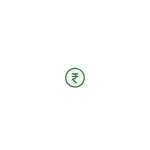How Do Card Issuers and Payment Networks Make Money?

Credit cards, debit cards, co branded cards and prepaid cards are different modes of payment that we are familiar with. You must have used at least one of these cards to pay at a retailer or for online shopping. While using these cards, you will notice that they all have common brand logos such as MasterCard, Visa or Rupay printed on the front and back. This is the name of the card’s payment network.
If you take your credit or debit card up close, you will also notice that it has the name of the issuing bank and its logo printed on it. So, can the same card be owned by two companies?
To get a better understanding of this, you must first understand the meaning and function of card issuers and payment networks.
Who Are Card Issuers?
Card (debit or credit) issuers are the financial Institution or banks that provide a facility to their consumers to carry out cashless transactions. Transactions can be directly from the user’s bank accounts or in the form of credit.
The issuer is responsible for managing numerous activities and features of a card. This includes everything from receiving applications for a new card and approving/rejecting the same to the distribution of new cards and deciding key policies and benefits.
The card issuer holds the full and final right to decide whether the application is to be approved or rejected. The right of determining the credit limit is solely at the discretion of the issuer. There are numerous issuers of credit and debit cards in India, with the prominent ones being SBI, HDFC Bank, Axis Bank, ICICI Bank, PNB, etc.
What Are Payment Networks?
Payment networks are the underlying links that act as an intermediary between a cardholder and a merchant. Whenever you are making any purchases, the payment processor uses a payment network to communicate the transaction information between your card issuer i.e. your bank and merchant’s bank (which also goes by the term acquiring bank or acquirer).
These payment networks continuously upgrade and work on securing their networks. This prevents massive network breaches which might lead to fraudulent activities, targeted by black hat hackers. For Instance, MasterCard is phasing out magnetic strips from their cards by the end of 2023. From 2024 onwards their card will no longer consist of magnetic strips, as announced by them.
Payment networks which are currently integrated with Indian banks and other financial institutions include VISA, MasterCard, Rupay, American Express, and Discover.
Business Model of Card Issuers: How Do They Make Money?
The main source of income for card issuers (banks) is from charges like joining fees, annual fees, etc. When a cardholder fails to repay the credit availed within the due date, a significant amount of interest is charged against the due amount, which can be even up to 50% per annum. Credit cards carry additional fees such as late payment fees and foreign currency transaction fees.
The secondary source of income for an issuer is from the interchange fee charged by the payment network from merchants. A small portion of it is shared with the issuing bank.
Business Model of Payment Networks: How Do They Make Money?
Payment networks make money by charging a small fee known as the “interchange fee”, which is their primary source of income. The amount that is charged from the merchant is a small percentage of the transaction which can be 0.5-3.5% and is bound by an agreement from the beginning.
However, this fee is shared with the acquiring bank and the issuing bank. There is another additional source for the payment network which is the annual licence fees derived from the banks for using their logo, name and brand. This business structure or the money-making strategy is the same for almost all payment networks, be it VISA, Mastercard, Rupay, American Express, etc.
How Do Payment Networks and Issuers Work Together?
An issuer and a payment network are integrated with the entire transaction process.
There are four players in the entire transaction process
- A Customer (You)
- A Payment Network (Example- VISA)
- An Issuer (Example- SBI)
- A Merchant (Example- Flipkart)
The series of actions involved in the process of a single transaction are as follows:
Step 1: You used your Visa card at the checkout of Flipkart.
Step 2: Flipkart sends that transaction data to Visa.
Step 3: Visa then sends it to SBI for verification.
Step 4: SBI will then review the transaction details and determine whether to approve or deny and send the result back to Visa.
Frequently Asked Questions
How do fraudsters get credit card details?
Credit card details such as cardholder’s name, card number, CVV, etc., are usually stolen in various ways. This includes your wallet getting stolen or loss of credit cards, Using card skimmers and shimmers, and random calls seeking cards and account details, hackers can steal your card details over unsecured networks like public Wi-Fi. This type of fraudulent activity is known as “card-not-Present” fraud.
How to report card fraud?
You should immediately contact your card issuer and explain to them what exactly happened. Usually, your losses get reimbursed which you are not responsible for, only if you report the fraud quickly.
How do hackers steal money from a debit card?
Hackers generally use card skimmers or shimmers, which are capable of collecting credit card data from the card’s magnetic strip which gets stored in a database. Then these are used in many ways like making a clone card or if the card does not have 3-domain security then it will be easy money for hackers.
What are the types of payment gateways?
There are mainly four different types of payment gateways based on how they are integrated which are hosted payment gateway, API-hosted payment gateway, self-hosted payment gateway, and local bank integration gateway.




